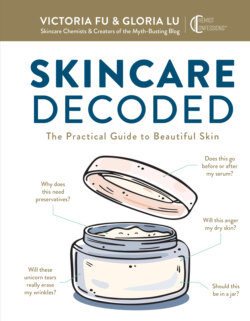Читать книгу Skincare Decoded - Victoria Fu - Страница 45
На сайте Литреса книга снята с продажи.
ОглавлениеSKINCARE DECODED • 50 MOISTURIZERS • 51
Category 2: Emollients (All Things Oil)
Emollients fill in the rough patches of your skin
and instantly give it that soft, smooth feel. These
ingredients are usually lighter, oil-based substances
such as jojoba oil, caprylic/capric triglyceride,
squalane, and coconut alkanes. The most
common emollient-centric products are, of course, face oils! These products
have become very popular in the past decade. As a result, many brands have
released their own “miraculous, antioxidant-rich, wrinkle-correcting, time-
stopping, sustainably harvested” face oil. These are great little moisturizer
boosters, but don’t take the fancy “turn back time” claims too seriously.
Who needs emollients? If you moisturize, there’s a solid chance that you
already have some emollients in your life. These can be great for both dry and
oily skin types; it’s just about finding the right oil. Just adding a few drops as a
last step to your routine can help elevate your go-to moisturizer on days when
it’s just not cutting it.
Category 3: Occlusives (Seal That Moisture In!)
Your skin is your barrier against outside aggressors like
UV light and pollutants, but sometimes your skin barrier
needs a little help. Occlusives are there to help your
skin do that job even better. Occlusives are heavy, fatty, waxy
substances that form a physical, water-resistant barrier over your
skin to seal in moisture. Some common occlusive ingredients
are petrolatum, butters, waxes, and heavier silicones. Occlusive-
forward products such as balms or salves are great for spot-treating ultradry
patches of skin.
Who needs occlusives? You guessed it! As with the other two categories,
everyone could benefit from having some occlusives in their lives. But if you’re
dry, seriously consider occlusives. Slather on that butter, balm, or petrolatum.
Trust us—your skin will thank you.
From my carcass,
I giveth thee
petrolatum.
